
PROJECT SPONSORS
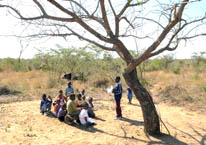
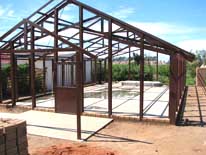
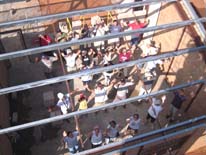
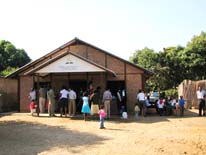
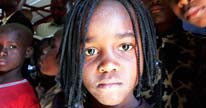
BRIEF HISTORY OF THE S.D.A. CHURCH IN MOZAMBIQUE |
|---|
Mozambique was colonized by Portugal, a country that fully supported the Roman Catholic Church and subsidized the clergy of the same denomination. Up to the fall of the right wing dictatorship, in 1974, missionaries from other churches were tolerated, but restricted. In this context, the beginning of the work of the Seventh-day Adventist Church in Mozambique was not due to missionaries sent via official church channels. Instead, the pioneers were two African students who had been for a while at the Malamulo Mission, a Seventh-day Adventist school and hospital in what is today Malawi. The roots of the Adventist work in Mozambique are in the activities of these two young people after they returned to their homes in the North of Mozambique, in the province of Zambezia. There, in 1931, they began sharing with others the beliefs they had learned at the Adventist school they had attended.
In a short time, hundreds of people were studying the Bible and the Adventist message. As reports of their work reached the leadership of the church, two missionaries were sent out, in 1933, to find out what was happening and to organize the work in that area of Africa. One of them, Max Weber, returned to Mozambique two years later to establish the first mission. He chose a spot more or less half way between the coast and the border with Nyassaland, (now Malawi). After receiving official permission to create a mission, he established the first official Seventh-day Adventist outpost in Mozambique, in 1935. He called the mission Mungulini, which in the local language means “Light.” It is located in the North of the country, in Zambezia, near the town of Mocuba. With humble buildings that included a church, a school and workshops, this first mission became the center of the activities of the Seventh-day Adventist Church in what was then known as Mozambique, Portuguese East Africa.
A Seventh-day Adventist tradition from North America was transplanted to that part of the world with great success: the camp meetings. The first one recorded in Mozambique, was in 1937. More than 1,500 people attended. Many of them had never been exposed to Christianity. Max Weber presented the Adventist message to the crowds, assisted by a local worker, Horacio Luia, who translated his evangelistic sermons to Portuguese and to the local dialect. In 1939, the first local believers were baptized.
Additional missionaries from the United States and from Portugal were sent over the years. The mission of Mungulini grew and a health service post or dispensary was created there. Slowly new groups of believers sprang up in different parts of the country. By 1954 the work expanded to include Portuguese settlers. In 1955 a small church of 22 members was organized in Lourenço Marques (now Maputo), the capital city. A new impetus in the organized work came about in 1963, with the arrival of Pedro B. Ribeiro, from Portugal, as President of the Mozambique Mission Conference. Other missionaries from Portugal continued to lead the work in Mozambique, until the arrival of Henrique Berg, from Brazil, in 1972.
Until the Portuguese Revolution of the Carnations, in 1974, the Roman Catholic Church was the official state church and the activities of other denominations were in some ways restricted. However, between April of 1974 and June of 1975, the Seventh-day Adventist Church enjoyed a short period of full freedom and total liberty to carry out evangelism.
After the independence of the country and under the leadership of the ruling party, FRELIMO, Mozambique implemented a Marxist political program, which was hostile to all religions. Jehovah’s Witnesses were particularly repressed by the new government, but some leaders of the Seventh-day Adventist Church were also thrown in jail, including Henrique Berg, the Union Conference President.
Following the year of independence, 1975, and until 1992, civil war ravaged the country. The warring entities were, on one side the forces loyal to the left-wing government and the ruling party, FRELIMO, and in the opposite camp, anti-communist rebels supported initially by Rhodesia and later by the South African government. During this time, many of the Seventh-day Adventist believers suffered hardships and were pressured to take sides in the conflict. It is estimated that during this period, about 1 million people were killed as a direct result of the violence.
Under the leadership of Mozambique’s second President, Joaquim Chissano, peace negotiations led to an agreement in 1992 which ended the civil war. Subsequently, a new constitution, free elections and unrestrained religious liberty were implemented. The new government took a much more moderate approach in terms of economic policies and ideology. Christianity returned to the mainstream of society with full recognition and complete freedom.
Since 1992, the number of church members has risen dramatically. Everywhere in the country there are now communities of Seventh-day Adventist believers. However, they do not have appropriate places of worship.
At the end of 2006, there were 216,636 members. The total number of people associated with the church including children and immediate relatives of members is about 500,000. Yet for all these people there are only 13 church buildings. That is why Maranatha Volunteers International is committed to build 1001 churches in this country.
Please join the project and make a difference!
To sign up for participation in this mission trip or to get more information, please email mozambique@puc.edu